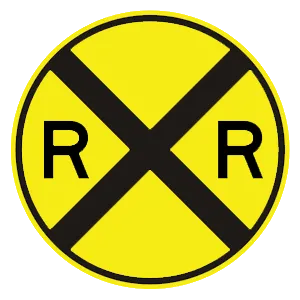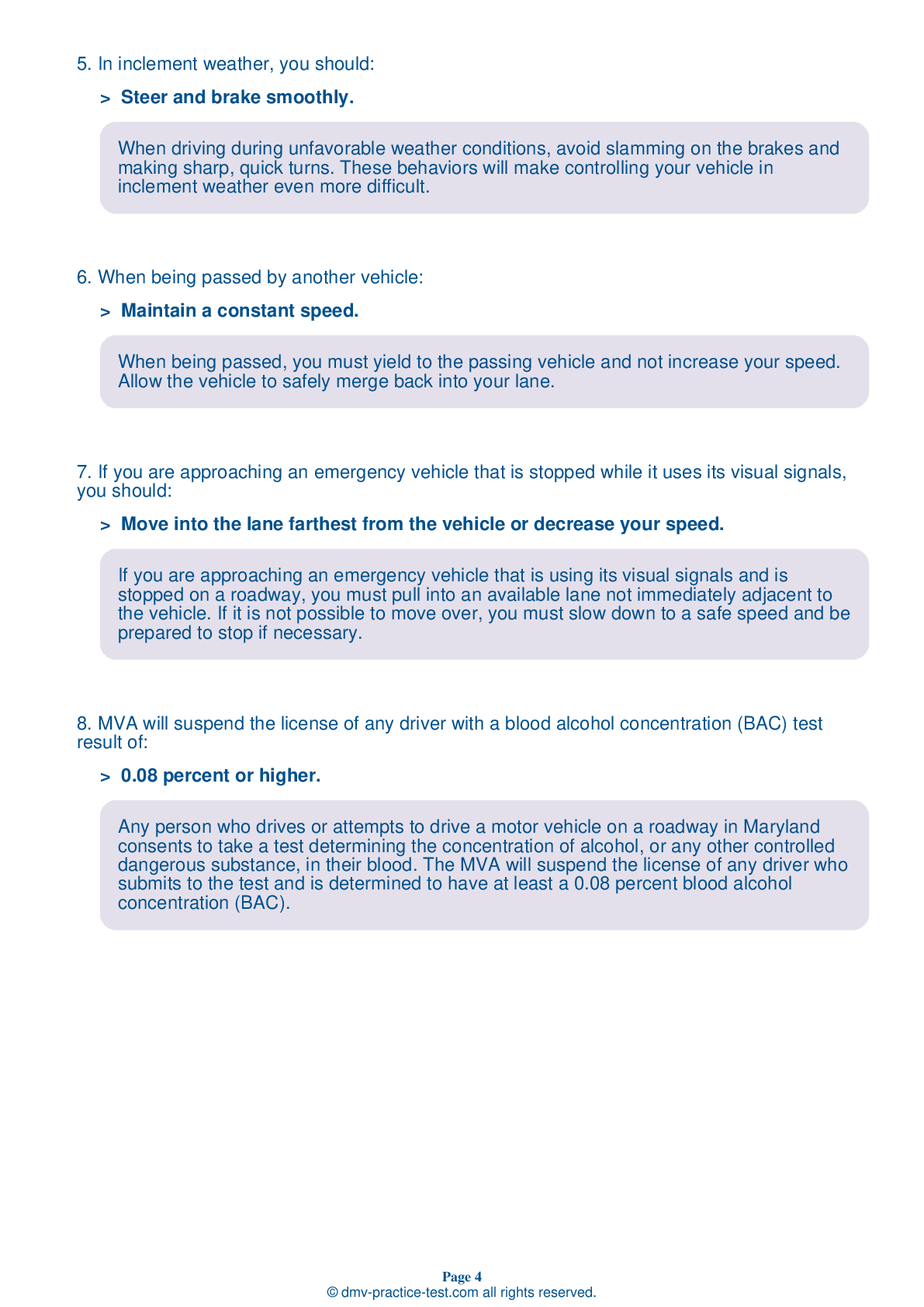FREE Maryland DMV Practice Test #10 Page 3 of 3
Maryland DMV practise examinations have been updated for January 2025. It includes questions based on the Maryland Driver Handbook's most essential traffic signals and regulations for 2025. Use actual questions that are very similar (often identical!) to the DMV driving permit test and driver's licence exam to study for the DMV driving permit test and driver's licence exam.
On the practise exam, each question gets a tip and explanation to help you remember the concepts. The written component of the official Maryland DMV test will include questions about traffic rules, traffic signs, and driving statutes, as well as knowledge from the Driver Handbook.
To obtain a passing grade, you must correctly answer 22 of the 25 questions. Take our DMV practise exam to help you prepare for your Maryland instruction permit or driver's licence.
The DMV exam is available in several languages.
Using any kind of testing assistance will result in an automatic fail, and the DMV may take additional action against your driver's licence, so stay away from it.
17 . You can help prevent road rage by:
Road rage can be caused by stress, rushing, and unexpected delays. To help prevent stress and the need to rush while driving, begin your trip earlier than you think is needed in order to allow yourself time for unexpected delays.
19 . To avoid traction loss on wet roads, you should:
To prevent hydroplaning, lower your speed in response to wet roads and keep your tires in good condition. If you detect a loss of control, take your foot off the gas, do not apply the brakes, maintain the direction of the vehicle, and allow the vehicle to slow to a manageable speed.
20 . When driving in fog, it is best to drive with:
Use your low beam headlights when driving in fog, rain, or snow. High beam lights can reflect off the weather conditions, lowering visibility even more.
21 . This sign means:

Orange, diamond-shaped signs are used to mark construction, maintenance, survey, and utility work areas. These signs help direct drivers and pedestrians safely through dangerous zones. Fines for traffic convictions may double in areas marked by these signs.
22 . When preparing to make a left turn from a two-way street, you should drive:
When you are turning left from a two-way street, begin in the lane closest to the centerline and start your turn just before the front of your car reaches the center of the intersection. Do not cut the corner. Steering hand-over-hand, turn into the first available legal lane.
23 . If you see a pedestrian using a guide dog or carrying a white cane:
Blind or partially blind pedestrians may carry a white cane or use the assistance of a guide dog. You must yield the right-of-way to a pedestrian with a guide dog or a white cane.
24 . You can help keep the driver behind you a safe distance away from your vehicle by:
It is not always easy to maintain a safe distance behind your vehicle. However, you can help keep the driver behind you a safe distance away from your vehicle by maintaining a steady speed and signaling turns, lane changes, and deceleration in advance.
25 . This sign indicates a:

Yellow signs with black markings are used to warn drivers about upcoming hazards or special conditions. Round signs are used only to warn about upcoming railroad crossings.
See the exact questions that will be on the 2025 Maryland DMV exam.
99.2% of people who use the cheat sheet pass the FIRST TIME
LT gives us an insight on how the cheat sheet provided her with all the study questions she needed before taking her test.
Joe initially studied with the handbook and failed his test, he eventually found us online, studied and pass his test the first time around.
2025 Maryland | Frequently Asked Questions
1. Be at least 15 years and 9 months old.
2. Pass the vision exam.
3. Complete the Maryland MVA Online Driver Test Tutorial.
4. Pass the knowledge test.
5. Provide proof of identity, age, and Maryland residency.
6. Have a parent or guardian co-sign your application.
7. Pay the required fee.
Remember, you must hold your learner's permit for nine months before you can take the driving test.




